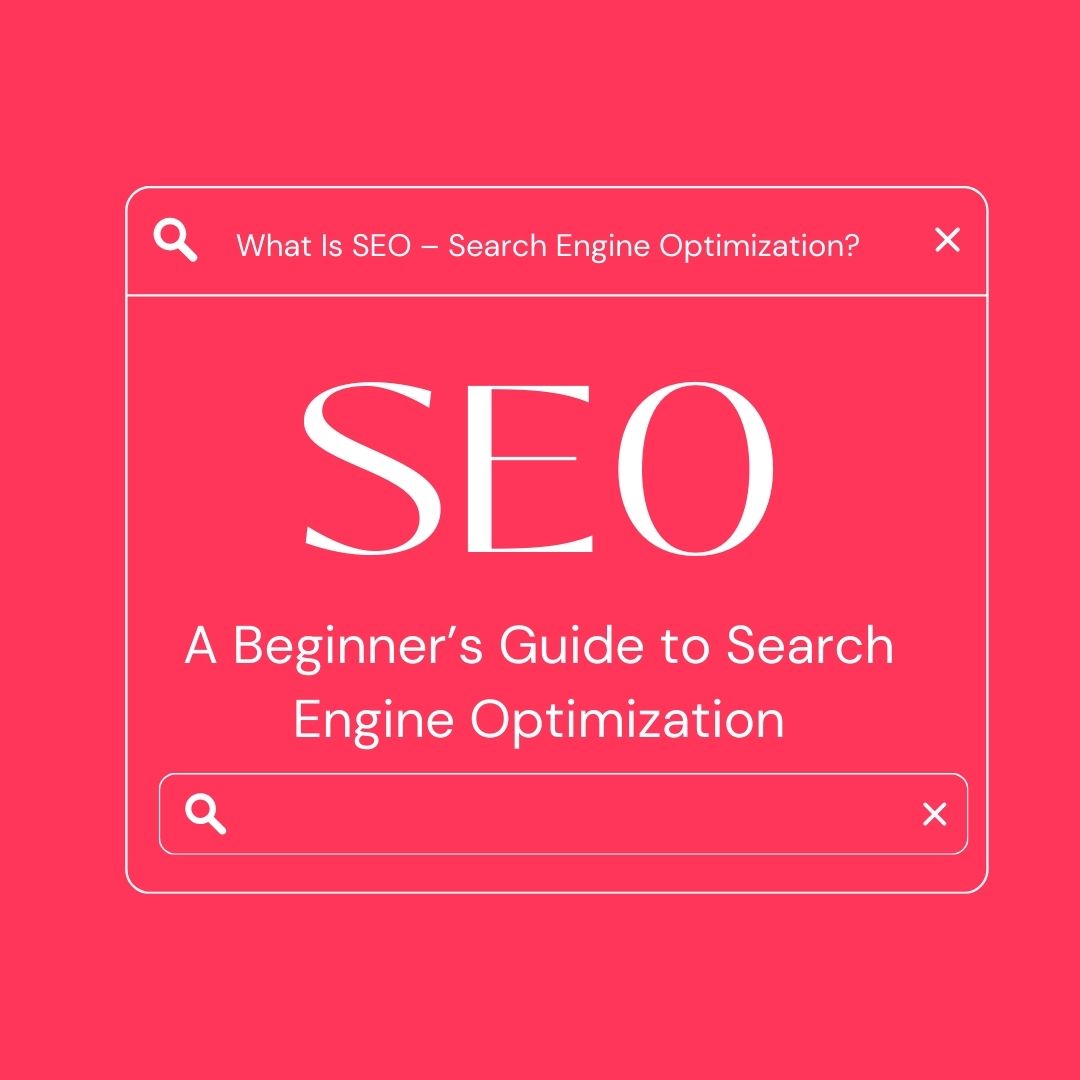What is SEO? A Beginner’s Guide to Search Engine Optimization
Search Engine Optimization (SEO) is the foundation of digital visibility. Whether you’re a startup, small business, or global enterprise, your customers are searching for solutions online. If your business isn’t showing up on Google, you’re losing traffic, leads, and revenue to competitors.
But SEO isn’t just about ranking higher—it’s about delivering relevant, helpful, and trustworthy content to the right audience at the right time.
In this guide, you’ll learn:
- What SEO is (in plain English)
- The main types of SEO and how they work
- Ranking factors that determine success
- Practical strategies to optimize your website
- Why SEO is still one of the highest-ROI digital marketing strategies
What is SEO (Search Engine Optimization)?
SEO is the practice of improving your website so it appears higher in search engine results when people search for keywords related to your business.
Think of Google as a massive library. SEO is the process of making sure your “book” (website) is easy to find, categorized correctly, and valuable enough to be recommended to readers (searchers).
👉 Example: If someone searches for “best logo design services in the USA”, SEO ensures your website shows up on the first page instead of buried on page 10.
How Search Engines Work (Crawling, Indexing, Ranking)
To understand SEO, you first need to know how search engines like Google operate.
1. Crawling
Google uses bots (crawlers) to scan websites and discover new or updated pages.
2. Indexing
Once crawled, pages are stored in Google’s index—a giant database of web content.
3. Ranking
When someone searches, Google’s algorithms determine the most relevant and trustworthy results based on 200+ ranking factors (content quality, backlinks, speed, mobile usability, etc.).
💡 Tip: If your page isn’t indexed, it can’t rank. Always check using site:yourdomain.com in Google Search.
Why SEO Matters for Your Business
- Organic traffic = free traffic (no ongoing ad spend).
- Builds brand authority and trust.
- Attracts qualified leads actively searching for your solution.
- Provides long-term results vs. short-term paid ads.
How Much Does Marketing Automation Actually Cost? — SEO and marketing automation often go hand-in-hand for lead generation.
Core Types of SEO
1. On-Page SEO
Optimizing content, titles, headings, keywords, and internal links.
Example: Adding target keywords naturally in your H2s and meta descriptions.
2. Off-Page SEO
Building authority with backlinks and social signals.
Example: Guest blogging, PR mentions, influencer outreach.
3. Technical SEO
Improving site speed, mobile-friendliness, structured data, and crawlability.
Example: Fixing broken links, adding XML sitemaps.
4. Local SEO
Optimizing for searches within your region.
Example: Ranking for “coffee shop near me” using Google Business Profile.
SEO Ranking Factors You Can’t Ignore in 2025
Google’s algorithm updates keep changing, but these remain crucial:
- Content quality & relevance (EEAT: Expertise, Experience, Authority, Trust)
- Page speed & Core Web Vitals
- Mobile-first indexing
- Backlinks from authoritative websites
- User experience (UX): navigation, design, bounce rate
- Search intent alignment
👉 External reference: Google Search Central SEO Guide
Practical SEO Tips for Beginners
- Do Keyword Research First
Use free tools like Google Keyword Planner or Ubersuggest.
Target long-tail keywords (e.g., “affordable logo design for startups”). - Optimize Your Titles & Meta Descriptions
- Include primary keywords naturally.
- Keep under 60 characters (title) and 160 characters (description).
- Create High-Quality Content
Answer real user questions. Use visuals, lists, and examples. - Improve Page Speed
Compress images, use caching, and check Core Web Vitals in Google Search Console. - Earn Backlinks
- Guest posts on relevant sites.
- Create share-worthy resources (infographics, guides).
Real-World Examples of SEO in Action
- E-commerce: An online store adds schema markup to display product ratings in Google search.
- B2B SaaS: A CRM tool uses blog posts + backlinks to rank for “best CRM software for small business.”
- Local business: A dentist claims and optimizes their Google Business Profile to rank for “dentist near me.”
Common SEO Mistakes to Avoid
❌ Keyword stuffing
❌ Buying low-quality backlinks
❌ Ignoring mobile optimization
❌ Not updating old content
❌ Forgetting internal linking
Frequently Asked Questions (FAQs)
Q1: What are the 4 main types of SEO?
On-page SEO, Off-page SEO, Technical SEO, and Local SEO.
Q2: How long does it take to see SEO results?
Usually 3–6 months, depending on competition and strategy.
Q3: What is the most popular SEO tool?
Google Analytics, Ahrefs, and SEMrush are industry favorites.
Q4: Is SEO better than paid ads?
SEO builds long-term visibility, while ads give immediate traffic. Both complement each other.
Conclusion: Why Businesses Should Invest in SEO Today
SEO is no longer optional—it’s the backbone of digital marketing. From ranking on Google to building authority in your niche, SEO helps you attract, engage, and convert customers at scale.
🚀 Start small: choose 1–2 SEO strategies (keyword optimization + speed improvements) and build from there.
💡 Next Steps:
- Explore our Marketing Automation Guide to integrate SEO with smarter workflows.
- Learn about Types of Marketing Automation & Their Benefits for scaling digital growth.

